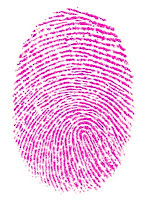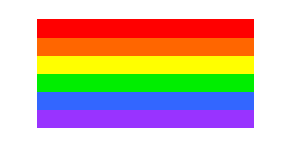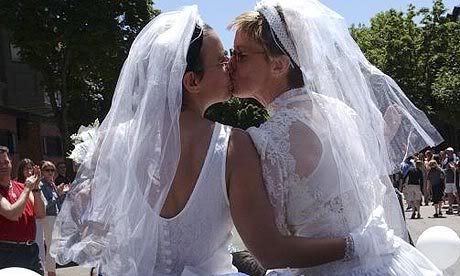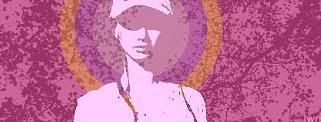Biological Sex
This can be considered one’s “packaging’ and is determined by chromosomes (XX for females; XY for males); hormones (estrogen/progesterone for females, testosterone for males); and internal and external genitalia (vulva, clitoris, vagina for females, penis and testicles for males). About one percent of the population can be defined as intersex—people whose bodies do not conform to standard definitions of male or female. So, in actuality, there are more than two sexes.
Bisexual
Describes the sexual orientation and identity of someone who is emotionally, sexually, and romantically attracted to people of more than one sex. While some people who identify as bisexual may be confused about their sexuality or not ready to accept being gay or lesbian, most bisexual people are clear and comfortable with their identity. Most bisexual people aren’t interested in dating men and women at the same time, and are just as likely as anyone else to form monogamous relationships. Many bisexual people describe themselves as falling in love with people rather than genders, and find their attractions fluid rather than fixed in one place along the sexuality continuum.
Coming Out (of the Closet)
To be “in the closet” means to hide one’s identity. Many LGBT people are “out” in some situations and “closeted” in others. To “come out” is to publicly declare one’s identity, sometimes to one person in conversation, sometimes to a group or in a public setting. Coming Out is a life-long process—in each new situation a person must decide whether or not to come out. Coming out can be difficult for some because reaction vary from complete acceptance and support to disapproval, rejection and violence.
Gay
Describes the sexual orientation and identity of someone who is emotionally, sexually, and romantically attracted to other people of the same sex. Gay can be used to refer to people of all sexes and genders; through it is used most commonly to refer to males. Some females choose not to identity as gay.
Gender
A socially constructed system of classification that ascribes qualities of masculinity and femininity to people. Gender characteristics can change over time and are different between cultures. Gender is often conflated with sex, but this is inaccurate because sex refers to physical/biological characteristics and gender refers to social and emotional attributes.
Gender Expression
Refers to the ways in which people externally communicate their gender identity to others through behavior, clothing, haircut, voice, and emphasizing, de-emphasizing, or changing their bodies’ characteristics. Typically, transgender people seek to make their gender expression match their gender identity, rather than their birth-assigned sex. Gender expression is not necessarily an indication of sexual orientation.
Gender Identity
One’s innermost concept of self as “male” or “female”—how individuals perceive themselves and what they call themselves. Individuals are conscious of this between the ages 18 months and 3 years. Most people develop a gender identity that matches their biological sex. For some, however, their gender identity is different from their biological sex. These people are sometimes called transsexuals, some of whom hormonally and/or surgically change their sex to more fully match their gender identity.
Gender Role
This is the set of roles and behaviors assigned to females and males by society. Our culture recognizes two basic gender roles: Masculine (having the qualities attributed to males) and feminine (having the qualities attributed to females). People who step out of their socially assigned gender roles are sometimes referred to as transgender.
Heterosexism
The societal assumption that heterosexuality is universal and/or superior. Heterosexism does not imply the same fear and hatred as homophobia. It can describe seemingly innocent statements, such as “She’d drive any man wild” based on the assumption that heterosexuality is the norm.
Homophobia
Refers to an individual’s fear or hatred of homosexuality, especially in others, but also in oneself (internalized homophobia). While heterosexism is best thought of at a societal or institutional level (and can therefore be changed through social action), homophobia describes an individual’s psychological fear or hatred of homosexuals.
Intersex
About 1% of children are born with chromosomes, hormones, genitalia and/or other sex characteristics that are not exclusively male or female as defined by the medical establishment in our society. In most cases, these children are at no medical risk, but most are assigned a sex (male or female) by their doctors and/or families and may undergo cosmetic surgery on their sex organs so that they fit society’s idea of “normal.” These procedures sometimes damage the child’s reproductive organs and can emotionally scar them by forcing on them a gender and/or sex role that may not feel natural.
Lesbian
Describes the sexual orientation and identity of a female who is emotionally, sexually, and romantically attracted to other females.
Queer
Historically a negative term used against people perceived to be LGBT, “queer” has more recently been reclaimed by some people as a positive term describing all those who do not conform to rigid notions of gender and sexuality. Queer is often used in apolitical context and in academic settings to challenge traditional ideas about identity (“queer theory”).
Questioning
Refers to people who are uncertain as to their sexual orientation or gender identity. They are often seeking information and support during this stage of their identity development.
Sexual Identity
Sexual identity labels include “lesbian,” “gay,” “bisexual,” “bi,” “queer,” “questioning,” “heterosexual,” “straight,” and others. Sexual identity evolves through a development process that varies depending on the individual. Sexual behavior and identity (self-definition) can be chosen. Though some people claim their sexual orientation is also a choice, for other this does not seem to be the case.
Sexual Orientation
This is determined by one’s sexual and emotional attractions. Categories of sexual orientation include homosexuals—gay, lesbian—attracted to some members of the same sex; bisexuals, attracted to some members of more than one sex, and heterosexuals, attracted to some members of another sex. Orientation is influenced by a variety of factors, including genetics and hormones, as well as unknown environmental factors. Though the origins of sexuality are not completely understood, it is generally believed to be established before the age of five.
Straight Ally
Any non-LGBT person who supports and stands up for the rights of LGBT people.
Transgender
Refers to those whose gender expression or identity transgresses socially assigned gender roles or expectation, or who do not identify as either of the two sexes as currently defined. Transgender is a broad term that includes transsexuals, cross-dressers, drag queens/kings, transgender butch, and a variety of other identities. When referring to transgender people, use they pronoun the have designated as appropriate, or the one that is consistent with their presentation of themselves. If an individual’s gender expression is ambiguous, try to use gender-neutral language or ask that person how she or he prefers to be addressed.
Transsexuals
Individuals who do not identify with their birth-assigned genders and sometimes alter their bodies surgically and/or hormonally. The transition (formerly called “sex change”) is a complicated, multi-step process that may take years and may include, but is not limited to, sex reassignment surgery.
Transphobia
Fear or hatred of transgender people; transphobia is manifested in a number of ways, including violence, harassment, and discrimination.
LGBT Terms and Definition
Tuesday, May 27, 2008Reference: http://www.jewishmosaic.org
Posted by Yffar (^^,) at 6:41 AM
Labels: LGBT News/ Articles
Subscribe to:
Post Comments (Atom)














1 comments:
yep yep! i-link ko tong blogsite mo ah!
Post a Comment